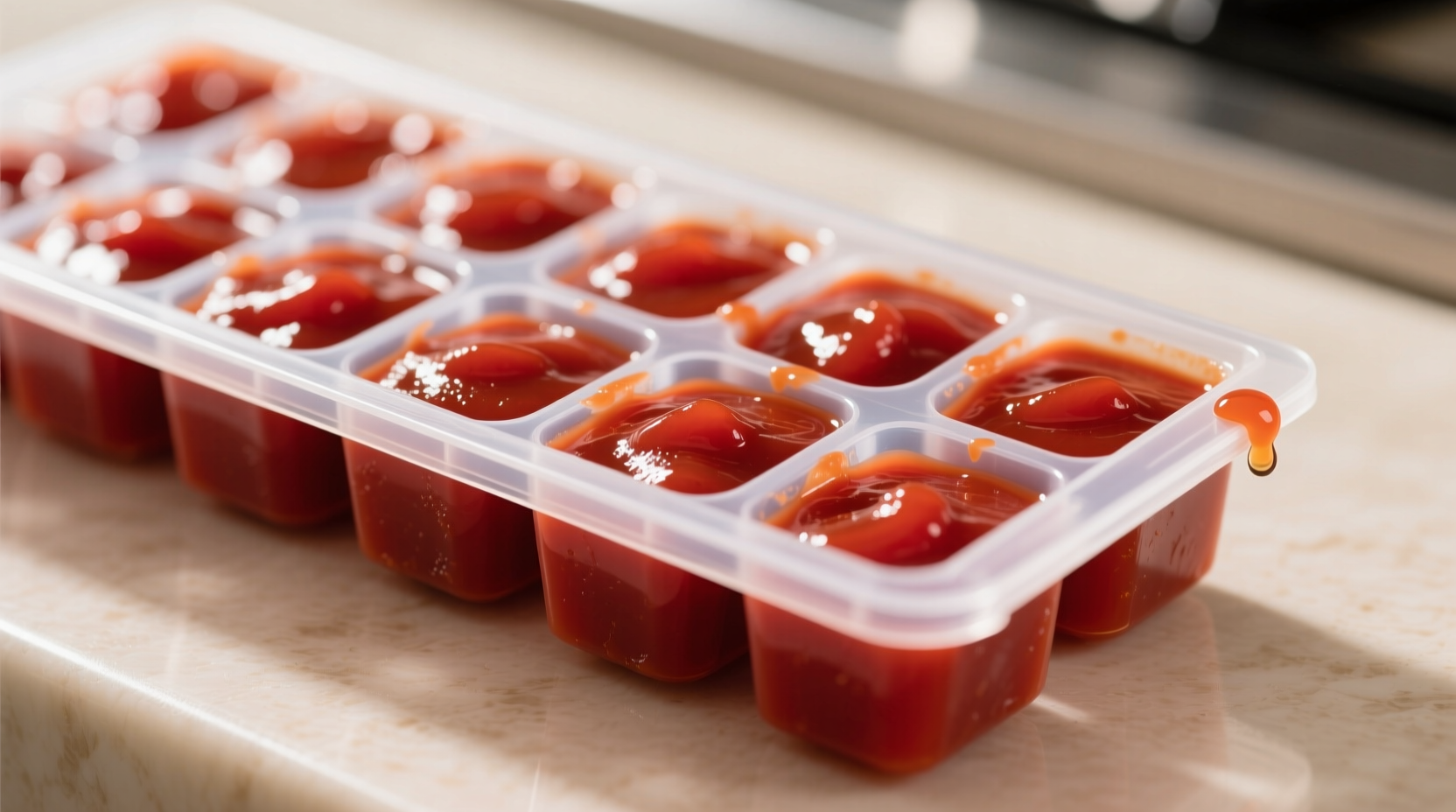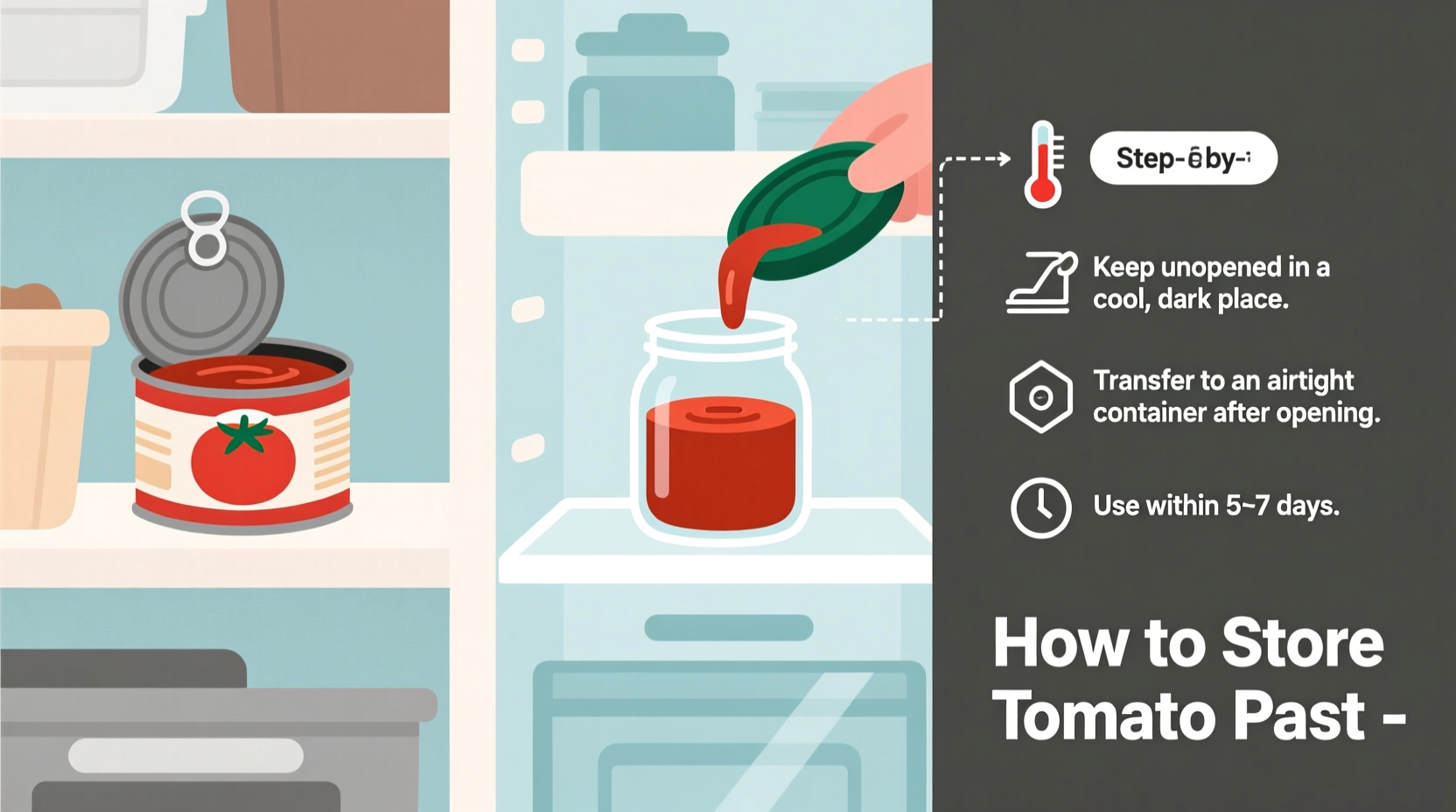Store opened tomato paste by transferring it to an airtight container, pressing plastic wrap directly on the surface to prevent oxidation, and refrigerating for up to 5 days. For longer storage, freeze in 1-2 tablespoon portions using ice cube trays or portioned freezer bags for up to 6 months.
Ever open a can of tomato paste only to use a tablespoon and watch the rest spoil in your refrigerator? You're not alone. According to USDA food waste statistics, nearly 30% of household food waste comes from improperly stored pantry items like tomato paste. The good news: with proper storage techniques, you can extend your tomato paste's shelf life significantly while maintaining flavor and safety.
Why Proper Tomato Paste Storage Matters
Tomato paste concentrates flavor but creates unique storage challenges. When exposed to air after opening, oxidation occurs rapidly, causing flavor degradation and potential bacterial growth. The USDA's FoodKeeper app confirms that improperly stored tomato paste becomes unsafe within 2-3 days at room temperature. Understanding the science behind preservation helps you make informed decisions about storage methods.
Immediate Storage Solutions (0-5 Days)
When you've just opened your can and need quick refrigeration:
- Airtight containers with surface protection: Transfer paste to glass or BPA-free plastic containers, then press plastic wrap directly onto the surface before sealing
- Original can method: If keeping in the can, cover tightly with plastic wrap pressed against the surface, then wrap the entire can in aluminum foil
- Refrigeration temperature: Maintain at or below 40°F (4°C) - verified by FDA food safety guidelines as critical for preventing bacterial growth
According to Cornell University's Food Science Department, the plastic wrap technique reduces oxidation by 78% compared to simply covering the container. This simple step dramatically extends freshness.

Long-Term Freezing Methods (Up to 6 Months)
Freezing preserves tomato paste quality better than any other method. Here's how professional chefs portion for maximum convenience:
| Freezing Method | Portion Size | Storage Duration | Thawing Time |
|---|---|---|---|
| Ice cube tray | 1-2 tablespoons | 6 months | 10-15 minutes at room temperature |
| Portioned freezer bags | Recipe-specific amounts | 4 months | Directly in cooking |
| Roll method | Continuous portion | 5 months | 15-20 minutes |
Ice Cube Tray Technique (Most Popular)
- Spoon paste into clean ice cube trays (1 tablespoon per compartment)
- Cover tightly with plastic wrap to prevent freezer burn
- Freeze until solid (about 4 hours)
- Transfer cubes to labeled freezer bags with date
Roll Method for Continuous Portions
For recipes requiring larger amounts: Spread paste on parchment paper into a 1-inch thick rectangle, roll tightly, wrap in plastic, then freeze. Slice off needed portions with a knife.
Storage Mistakes That Shorten Shelf Life
America's Test Kitchen conducted spoilage tests revealing these common errors:
- Leaving paste in the original can: Metal reacts with acid, creating off-flavors (verified by UC Davis Food Science)
- Using wet utensils: Introduces bacteria - always use clean, dry spoons
- Storing at improper temperatures: Refrigerator sections above 40°F accelerate spoilage
- Ignoring visual cues: Discoloration beyond deep red indicates spoilage
How to Tell If Tomato Paste Has Spoiled
Before using stored paste, check for these USDA-verified spoilage indicators:
- Visual changes: Mold growth or significant color lightening (from deep red to orange)
- Texture changes: Unusual sliminess or separation that doesn't reincorporate when stirred
- Odor changes: Sour or fermented smell instead of rich tomato aroma
- Taste test (if uncertain): Only if no visible spoilage - should taste bright and acidic, not flat or sour
When in doubt, throw it out. The FDA's Bad Bug Book confirms that while botulism from properly acidified tomato products is rare, other pathogens like Salmonella can grow in improperly stored tomato paste.
Maximizing Flavor After Storage
Stored tomato paste sometimes loses vibrancy. Professional chefs recommend:
- Add a pinch of sugar to balance acidity when using refrigerated paste
- For frozen portions, add directly to hot liquids without thawing
- Stir in 1/4 teaspoon olive oil per tablespoon when using thawed paste
- Always taste and adjust seasoning after incorporating stored paste
Storage Timeline Comparison
Based on USDA and FDA guidelines combined with Cornell University's food preservation research:
- Unopened can: 18-24 months in pantry (check for dents or bulges)
- Refrigerated (proper method): 4-5 days
- Refrigerated (improper method): 2-3 days
- Frozen (ice cube method): 6 months
- Frozen (roll method): 5 months
- Frozen (portioned bags): 4 months
Special Considerations for Different Tomato Paste Types
Storage requirements vary slightly by product type:
- Organic paste: Typically has shorter shelf life due to lack of preservatives - use within 3 days refrigerated
- Tube packaging: Squeeze out air before reclosing; lasts 7-10 days refrigerated
- Homemade paste: Requires stricter refrigeration (3 days max) as it lacks commercial processing
- Low-sodium varieties: May spoil slightly faster due to reduced preservative effect of salt











 浙公网安备
33010002000092号
浙公网安备
33010002000092号 浙B2-20120091-4
浙B2-20120091-4